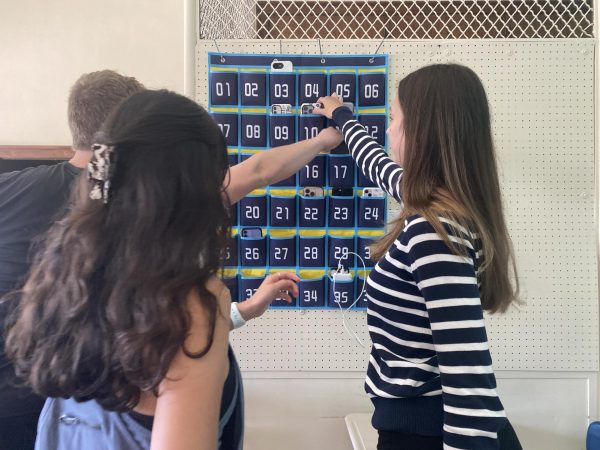New class allows students to learn Japanese
In a classroom full of students, they all rise from their seats when prompted by their teacher. In a Japanese tradition of respect, they all bow simultaneously.
Japanese class starts off with the respectful bow to the teacher. To show that you are present in the class, you say “present,” or “here” which sounds like “hi” in English. Mr. Sundy Satsu, the Japanese teacher, then starts his presentation on PowerPoint. This is how Satsu usually teaches his lessons according to his students. He rewards participation by signing a participation sheet when students answer the questions on the slide.
Satsu also tries to create games to teach the language. He had a competition between two students in which they had to read a section of Japanese on the slide and guess the country they were reading about. With teaching credentials in Japanese, Math, and Psychology, it is evident that Satsu enjoys teaching.
The Japanese class was added to Lane’s list of World Languages this year. The students currently taking the class have personal reasons that motivated them to take Japanese.
Cynthia Martinez, Div. 666, wants to learn Japanese so she can be a missionary in Japan and assist those affected by disasters. Martinez wants to help areas impacted by the earthquake in 2011 because she believes there is still forgotten destruction and that Japan has been overshadowed by more recent natural disasters, such as the typhoon in the Philippines.
“I would like Lane Tech students to be leaders in global issues in the near future. Recent years in particular, we are witnessing extreme weather – super hurricanes, tornados, raised ocean temperatures,” Satsu said.
Basil Szechinski, Div. 675, took the class so he can learn to communicate with his grandmother who speaks little English but fluent Japanese.
“She has her own flower arrangement shop and one time I was helping her,” Szechinski said. “Everytime she kept telling me colors and directions, all in Japanese. I had to ask her to write down what she meant because saying it in English was a hassle for her.”
Ethan Recinto, Div. 751, decided to take Japanese since he has ancestral roots in Japan. Recinto stated that he enjoys the class and wants Lane to continue with Japanese courses. He was part of the first graduating class of the LTAC, so he also takes Chinese III.
“Chinese III is not hard, but Japanese is easier because Japanese has an alphabet,” Recinto said.
Some students like Wiktoria Smiarowska, Div. 675, have no cultural or ancestral ties to Japan but enrolled in the class because they enjoy Japanese culture. Smiarowska agrees that Japanese is more difficult than her native language, Polish.
“Japanese… has whole new alphabet[s] with symbols that you need to memorize, especially Japanese since there are three alphabets,” Smiarowska said. “Hiragana and Katakana have different symbols even though they create the same sound. Katakana is used for writing English words in Japanese letters. Kanji is just symbols stolen from Chinese.”
Many students agree that Japanese is a difficult language to learn. Recinto, since he is a freshman, has the opportunity to take AP Japanese when he is a senior. With Japanese, Lane now has the largest Advanced Placement program in Chicago.
Your donations directly fund the Lane Tech student journalism program—covering essential costs like website hosting and technology not supported by our school or district. Your generosity empowers our student reporters to investigate, write, and publish impactful stories that matter to our school community.
This website is more than a publishing platform—it's an archive, a research tool, and a source of truth. Every dollar helps us preserve and grow this resource so future students can learn from and build on the work being done today.
Thank you for supporting the next generation of journalists at Lane Tech College Prep!





